Crew 314 GreenHab Report 14-04-2025
GreenHab Officer: Bérengère Bastogne
Environmental control (fan & heater):
Heater on (setup temperature = 72 °F)
Fan on (to keep the temperature below 94 °F)
Average temperatures (last 24h): 82.6 °F
Maximum temperature (last 24h): 95 °F
Minimum temperature (last 24h): 70.2 °F
Hours of supplemental light: 7-10 pm
Daily water usage for crops: 10 gallons
Daily water usage for research and/or other purposes: 0.5 gallons
Water in Blue Tank (200 gallon capacity): 124.85 gallons
Time(s) of watering for crops: 10 min
Changes to crops: None
Narrative: I watered all the plants with water.
The door of the GreenHab was left open for 7 hours and 55 minutes (9.30 am to 5.25 pm) to reduce the temperature inside (maximum of 95 °F).
Harvest: (include which crop and mass in grams) None
Support/supplies needed: None
Astronomy Report – April 13th
[category
astronomy-report]
Name: Louis Baltus
Crew: 314
Date: 13Apr2025
MUSK OBSERVATORY
Solar Features Observed: Most of the pictures I took this morning were the whole solar disk. Nevertheless, I zoomed in on regions where I saw prominences in order to train myself with the other scales. Sadly, I only had time to finish my first edit, combining two pictures of the same zoom in a prominences region ( see attached ).
Images submitted with this report: (2) The one I’ve just finished editing and one as an example of the problem I encountered with some of my pictures. More pictures will follow as I have a lot of them to edit in the queue. Please feel free to comment on my first final picture so I can make them even better !
Problems Encountered: In the second attached photo, you’ll see an example of the problem I can have with some of my pictures when I try to stack them on the piece of software. Maybe one of you can give me some advice in order to avoid this problem.
Crew Photos – April 13th
Journalist Report – April 13th
Crew 314 Journalist report 13-04-2025
Sea of Shells—a location named for its geological past as the floor of an ancient Martian ocean—was the focus of today’s EVA. Four crew members departed the MDRS under the soft light of the Martian morning, their objective both scientific and operational. The site offered an ideal opportunity to collect environmental data and test equipment under field conditions.
Leading the EVA was GreenHab Officer Bérengère Bastogne, whose ongoing research explores the potential interaction between Martian soil and fungal life. Her aim is to assess how fungi might contribute to future life-support systems by facilitating nutrient cycles or soil regeneration on Mars. Today, she successfully collected two soil samples from the Sea of Shells to support this investigation. Accompanying her was Crew Engineer Antoine, who inspected a technical installation exposed to the strong winds of the previous sol to ensure its continued integrity.
The EVA team split into two rover crews, with Béatrice driving Opportunity alongside Antoine, and Bérengère piloting Curiosity with Arnaud, the EVA leader. Early into the drive, Mission Support advised the crew to reduce their speed to preserve battery life. By 10:20, the team had reached their target zone. Due to unexpectedly rapid battery depletion—Opportunity had dropped to 57%—the team made the decision to park earlier than originally planned. They proceeded on foot to complete their tasks, including drone-based aerial photography of the surrounding canyon, which will aid in terrain analysis and documentation.
The return journey was completed without incident, although communications were briefly disrupted between 11:26 and 11:40. Upon regaining signal at the intersection of Cow Dung Road and Galileo Road, the team confirmed the inspection of Antoine’s installation and completed a summary of their findings. Driving duties were rotated: Antoine briefly took over Opportunity, later returning control to Béatrice, while Arnaud drove Curiosity for the full return.
Meanwhile, at the MDRS, the fourth medical emergency simulation was conducted in the Science Dome. This session focused on teamwork, communication, and decision-making under pressure, key elements of Crisis Resource Management. The scenario was led by the female crewmembers, who executed the exercise with confidence and coordination—reinforcing the importance of regular training in isolated environments.
Inside the Hab, regular activities continued efficiently. The arrival of fresh supplies, including eggs, coffee, and red peppers, allowed the crew to prepare a homemade cake for dinner—boosting morale and adding a sense of normalcy. Physical training remained a priority, with biking and strength exercises scheduled as part of daily routines. Bérengère also contributed to team identity by sewing the MDRS logo onto the crew’s flight suits. Health and Safety Officer Odile took time to engage in a creative activity, sketching a peaceful scene to capture the day’s mood and provide a moment of mental relaxation.
Astronomer Louis spent the afternoon working in the observatory, capturing high-resolution images of the sun. He compiled and refined a composite image, continuing his documentation of solar activity from the Martian surface.
Later in the day, the Science Dome experienced a temporary power outage, attributed to an energy overload caused by cloud cover and reduced solar input. As a result, experiments by Bérengère and Batoul were postponed until solar charging resumed. Nevertheless, Batoul continued her sample preparation, adding color markers to aid in future identification and microscopic analysis.
Sol by sol, the mission advances through methodical research, logistical coordination, and shared dedication. While the Martian landscape remains silent and still, it serves as an active laboratory for discovery—one shaped by both science and the human pursuit of knowledge.
EVA Report – April 16th
Crew 314 EVA Report 16-04-2025
EVA #13
Author: Béatrice Hollander (Commander)
Purpose of EVA: The crew will be collecting soil for Bérengère at Candor Chasma, as she hasn’t been able to obtain samples from that location yet. These efforts support ongoing research on Arbuscular Mycorrhizal Fungi and their potential to enhance Martian soil bioactivity in future life-support systems.
Start time: 9:34am
End time : 11:49am
Narrative : At 9:34 AM, the EVA team entered the SAS for the 5-minute decompression procedure. The team was split into two rovers: Spirit, driven by Bérengère with Odile as passenger, and Opportunity, driven by Batoul with Louis as passenger.
The rovers left the MDRS at 9:43 AM. By 9:49 AM, the team reported their position at the intersection of Galileo Road. However, at 10:00 AM, they realized they had driven approximately 500 meters past the intended location and turned around to return to the correct site.
They arrived at the planned location at 10:08 AM and parked the rovers. At 10:11 AM, the crew continued on foot toward the canyon. By 10:23 AM, they had entered the canyon. At 10:54 AM, attempts to reach the team via radio were unsuccessful, and there was no communication.
At 11:02 AM, the team began heading back through the canyon. They reached the rovers at 11:28 AM and departed from Compass Rock. At 11:36 AM, they passed the Galileo Road intersection and arrived back at the MDRS at 11:42 AM.
The crew entered the SAS for decompression at 11:44 AM, and the EVA officially ended at 11:49 AM.
Destination: Candor Chasma
Coordinates : 4252000N, 520000W
Participants : Louis Baltus (Astronomer), Bérengère Bastogne (Greenhab), Batoul Tani (Journalist) et Odile Hilgers (HSO).
Road(s) and routes per MDRS Map : The crew will depart the MDRS via Moonwalk Road, then follow Cow Dung Road 0110 before turning onto Galileo Road 1104 toward Compass Rock.
Mode of travel: Driving and walking
Operations Report – April 16th
Crew 314 Operations Report 16-04-2025
SOL: 10
Name of person filing report: Antoine Dubois (Engineer)
Non-nominal systems : /
Notes on non-nominal systems : /
ROVERS
Spirit rover used:
Hours : 273.4 (0.5 hours used)
Beginning charge : 90%
Ending charge: 67%
Currently charging: no
Opportunity rover used:
Hours: 216.9 (0.7 hours used)
Beginning charge: 100%
Ending charge: 61%
Currently charging: no
Curiosity rover used:
Hours: /
Beginning charge: /
Ending charge: /
Currently charging: yes
Perseverance rover used:
Hours: /
Beginning charge: /
Ending charge: /
Currently charging: /
General notes on rovers : yes
Summary of Hab operations: Today in the Hab, we dedicated time to cooking, socializing, making progress on our experiments, and advancing our individual reports. We also engaged in some physical exercise to maintain our fitness. To wrap up the day, we held our regular team meeting to review our progress and plan the tasks ahead.
Water Use (please use both methods to estimate water usage)
Time of measurements (collect data for the same time window): 6 pm
1) Per formula (see notes): 16.08 gallons
2) Smart Home Dashboard (see notes): 18.97 gallons
Water (static tank, remaining gallons): 266.38 gallons (per formula) & 279.73 gallons (Smart Home Dashboard)
Static tank pipe heater (on or off): off
Static tank heater (on or off) : off
Toilet tank emptied (no or yes): no
Summary of internet: Research for experiments, mail, languages learning and music listening.
Summary of suits and radios :
Suits : EVA 13 : 7, 8, 9, 10 & EVA 14 : 10, 9, 8
radios : EVA 13 : 1, 5, 6, 7 & EVA 14 : 3,5,4
Summary of GreenHab operations: put notes here
I watered all the plants with water.
The door of the GreenHab was left open for 3 hours and 50 minutes (1:00 am to 4:50 pm) to reduce the temperature inside (maximum of 97.3 °F).
WATER USE: 8 gallons
Heater (On or Off): Heater on (setup temperature = 72 °F)
Supplemental light (hours of operation): 7-10 pm
Harvest (name, weight in grams): 6 g of parsley, 59 g of rainbow cherries
Summary of ScienceDome operations: put notes here
Observing the results in the microscope
End of experiment with UV and gravity (dismantling of equipment)
Isolation of membranes and staining of the spores to observe germination
Dual split (Heat or AC, On or Off): AC, ON
Summary of RAM operations: No operations were carried out in RAM.
Summary of any observatory issues: No observation today.
Summary of health and safety issues: Everyone was in good health today, with no issues reported. There were no safety concerns to note.
Questions, concerns and requests to Mission Support: None
GreenHab Report – April 16th
Crew 314 GreenHab Report 16-04-2025
GreenHab Officer: Bérengère Bastogne
Environmental control (fan & heater):
Heater on (setup temperature = 72 °F)
Fan on (to keep the temperature below 94 °F)
Average temperatures (last 24h): 84.3 °F
Maximum temperature (last 24h): 97.3 °F
Minimum temperature (last 24h): 71.4 °F
Hours of supplemental light: 7-10 pm
Daily water usage for crops: 8 gallons
Daily water usage for research and/or other purposes: 0 gallon
Water in Blue Tank (200 gallon capacity): 106.1 gallons
Time(s) of watering for crops: 10 min
Changes to crops: None
Narrative: I watered all the plants with water.
The door of the GreenHab was left open for 3 hours and 50 minutes (1:00 am to 4:50 pm) to reduce the temperature inside (maximum of 97.3 °F).
Harvest: (include which crop and mass in grams) 6 g of parsley, 59 g of rainbow cherries
Support/supplies needed: None
Operations Report – April 20th
Crew 315 Operations Report 20-04-2025
SOL: 0
Name of person filing report: Michael Andrews
Non-nominal systems: Bathroom sink drain was noticed to slowly drain
Notes on non-nominal systems: Plan to diagnose sink drain first thing on Sol 1
ROVERS
Spirit rover used:
Hours: N/A
Beginning charge: N/A
Ending charge: N/A
Currently charging: No
Opportunity rover used:
Hours: 215.6 (1.3 hours used)
Beginning charge: 100%
Ending charge: 99%
Currently charging: No
Curiosity rover used:
Hours: 308.9 (1.3 hours used)
Beginning charge: 100%
Ending charge: 99%
Currently charging: No
Perseverance rover used:
Hours: 322.2 (1.3 hours used)
Beginning charge: 100%
Ending charge: 99%
Currently charging: Yes
General notes on rovers: Familiarized the crew with rover operation prior to simulation start.
Summary of Hab operations: This was our first day on Mars! Crew 315 arrived at MDRS around 1300, unpacked their belongings, and received their basic station training.
Water Use (please use both methods to estimate water usage)
Time of measurements (collect data for the same time window): 2040
1) Per formula (see notes): 42.48 gallons (incorrect as this is the first measurement
2) Smart Home Dashboard (see notes): 13.12 gallons
Water (static tank, remaining gallons): 507.52 gallons (per formula)
Static tank pipe heater (on or off): No
Static tank heater (on or off): No
Toilet tank emptied (no or yes): No
Summary of internet: Completing reports, learning languages, communicating with family, completing professional tasks from work before simulation.
Summary of suits and radios: None used today
Summary of GreenHab operations: Familiarization with crew and GreenHab operations, only watered plants in the afternoon
WATER USE: 9 gallons
Heater (On or Off): Yes
Supplemental light (hours of operation): 1900 to 2100
Harvest (name, weight in grams): None
Summary of ScienceDome operations: No activity performed in dome today
Dual split (Heat or AC, On or Off): Off
Summary of RAM operations: Tape measurer used to measure water consumption
Summary of any observatory issues: None
Summary of health and safety issues: None
Questions, concerns and requests to Mission Support: None
Crew 315 Crew biographies, photos and mission patch 20Apr2025
[title Crew biographies, photos and mission patch – January 8th]
TIMOTHY A. GAGNON
PO BOX 1283
TITUSVILLE, FL 32781
Email: KSCartist
Tim Gagnon was born and raised in Hartford, Connecticut. A fascination with space
exploration came early as did an interest in art. Like many others of his generation Tim
remembers watching the missions of his childhood heroes on a small black and white
television with “rabbit ears” that could receive few broadcast stations. For his 16th birthday
gift in 1972 his parents arranged for Tim and his father to attend the launch of Apollo 17 as
invited guests of NASA.
Ever since reading about the design of the Skylab 1 patch in an article written by the artist
Frank Kelly Freas in 1973, Tim dreamed about creating a patch for a flight crew, to use his
artistic talent to contribute to the space program. He came close in 1985 when Bob Crippen
invited him to submit designs for the first shuttle mission scheduled to launch from
Vandenberg Air Force Base in California, STS-62A. That mission was canceled after the
Challenger accident.
In 2004 his dream finally came true when astronaut John Phillips selected Tim to design the
emblem for the Expedition 11 mission to the International Space Station. When the
Expedition 11 patch was unveiled, Tim was contacted by Dr. Jorge Cartes of Madrid who
congratulated him and spoke of how he also wanted to design mission patches. Tim
responded that if the opportunity ever arose again, they would collaborate.
In 2007 Tim was selected by the STS-126 Crew to design their mission emblem. Knowing
how much it meant to participate, Tim invited his pen pal Jorge to join him on this project.
The STS-126 crew was so happy with the result that they recommended Tim and Jorge to the
STS-127 crew. As each patch was completed, Tim and Jorge were recommended to more
flight crews. Since 2008 they teamed to work with the astronauts of the following Space
Shuttle crews: STS-129, STS-132 and STS-133*. NOTE: this is the full story about the STS-
133 patch http://www.collectspace.com/news/news-030711a.html
The end of the Space Shuttle Program did not slow down demand. Tim and Jorge were proud
to work with the following crews serving aboard the International Space Station during
Expeditions 22, 23, 25, 26, 27, 29, 30, 34, One Year, 47, 48, 53 and 55. Over the last six
years Tim has worked with multiple Flight Directors and other NASA and industry teams to
create their emblems.
Tim continues to build a reputation as someone easy to work with and increasingly in
demand.
Bio:
Michael Andrews, CPIM, is a logistics leader in the aerospace industry. He holds dual degrees in Aerospace Engineering and Mechanical Engineering from the University of Florida, along with a Master’s Degree in Business Administration from Arizona State University. He is passionate about pathfinding logistics practices in austere locations in anticipation of aiding colonization of the Moon, of Mars, or beyond.
Michael has over 12 years of aerospace experience, and 10 of those have involved materials management leadership with defense contractors and launch providers. Michael has experience in program management; along with managing the receiving, shipping, inventory, and delivery operations in aerospace distribution centers.
This is Michael’s second analog astronaut mission. He served as the Logistics and Communications Officer for Crew-16 at the Flashline Mars Arctic Research Station on Devon Island (Nunavut, Canada) in July of 2024. He will be returning to Flashline in July of 2025 as an engineer on the 2025 advance team to upgrade their station.
Michael also holds a Certification in Planning and Inventory Management from APICS. He lives in San Pedro, CA, is a certified rescue scuba diver, and enjoys marathon running and hiking.
Respectfully,
Michael Andrews
Elena Saavedra Buckley — Crew 315 Journalist and GreenHab Officer
Elena Saavedra Buckley is a senior editor at Harper’s Magazine, where she edits and writes articles about a wide breadth of subjects. She is also a contributing editor at The Drift, a triannual literary magazine, and has written for The New Yorker, The Paris Review, and other publications.
After getting a bachelor in Humanities at Yale, Elena moved to rural Colorado to work for High Country News, a magazine that covers the American West. There, she covered Indigenous affairs and reported from multiple reservations. She then lived and wrote in New Mexico, Texas, and California before moving to New York City, where she is now based.
While Elena is likely the least scientifically qualified member of Crew 315—and primarily here to write a magazine story about the experience—she has had a lifelong interest in space and space exploration. As a teenager in Albuquerque, New Mexico, she saved the tips from her barista job to buy a telescope, and she attended an astronomy camp at the University of Arizona when she was 17. She’s happy to be at the MDRS to relive some of that curiosity. In her free time, she sings Renaissance music in a choir, cooks elaborately, and buys odd trinkets for her apartment.
On her mission to explore the mysteries of the universe and advance the future of human spaceflight, Urban Koi holds a Master’s in Space Systems Engineering from Johns Hopkins University and is continuing on with her studies as a future Doctor of Space Medicine. Koi’s multidisciplinary roles include: Principal Investigator & Space Systems Engineer in the NASA L’SPACE program with a focus on Human Health, Life Support, & Habitation Systems; Bioastronautics Researcher at the International Institute for Astronautical Sciences (IIAS); Analog Astronaut – Health & Safety Officer (HSO) at the Mars Desert Research Station (MDRS); Rescue Scuba Diver; Pilot-in-Training; and Award-Winning Film Director & Photographer.
Synthesizing her passions in science, engineering, and art, Koi is the Founder + Director of SOTU STUDIO (Student of the Universe®), an experimental multimedia studio born by curiosity, cosmic discovery, and limitless dreams that produces interdisciplinary art, photography, and films. Over 12+ years in the industry, Koi propelled the missions of world-renowned titans through a dynamic lens of otherworldly visions and established a global following with 1 Million+ in reach. Koi was selected by NASA as an independent photographer to document the engineering process of space missions to the Moon, Mars, and beyond. Koi’s work is featured on NASA multimedia/social channels, award-winning publications, and her Instagram (@urbanxkoi).
Over 10+ years, Koi has also served as Co-Leader on the 100cameras Board of Creatives, a nonprofit organization recognized by the United Nations University Centre for Policy Research (UNU-CPR), UNIDIR, and UNICEF as an enrichment program that empowers youth across the world to become leaders through a robust methodology that has shown to improve emotional intelligence, well-being, and resilience through photography and storytelling. Koi is pioneering a new epoch in space exploration, where human resilience converges with technological ingenuity to illuminate the path to celestial destiny in the vast expanse of the cosmos.
David was present for the impressive launches of Apollo 11 and the first Space Shuttle launch. He has met two lunar astronauts and like many others dreamed about space exploration and being a crew member on a journey to Mars.
David began a lifelong passion for electronics and space technology while in elementary school. He served in the U.S. Air Force. Later, after obtaining Bachelor of Science and Master of Engineering in Electrical Engineering degrees, he designed state of the art integrated circuits. He holds seven patents, has written technical papers and has presented his work at various international conferences.
David is a lifelong learner and enjoys working with talented people. He is a founding member of The Mars Society. He also has formal training in anthropology and archaeology. Hobbies include radio-controlled airplanes, electronics, music composition, musical instrument synthesis and antique radio and pipe organ restoration. David also enjoys adventure, hiking and traveling. Utah, with its stark beauty and remote Mars like desert areas, is one of his favorite states to visit.
Supplemental Operations Report -April 19th
Date: 4/19/2025
Name of person filing report: David Steinhour
Reason for Report: Routine
Non-Nominal Systems: Crew car. Power system battery, inverters, generator. Robotic observatory. HAB outer shell. Spirit.
Power system: "Solar: The battery bank does not hold charge when sun is down and low on the horizon. Inverter Slave 1 and 2 went offline and do not restart, which limits us to 4kW when on solar.
Main generator has been monitored for oil leaks; minor leaks observed, Moreover, the generator is consuming oil because of worn piston rings. Adding oil every day is necessary. Generator is limited to 8kW, see previous reports for details. Engine governor has been replaced, and the threads of one of the governor bolts was stripped and repaired with a heli-coil insert. Oil is still leaking from the flange that is held down by this fastener – the gasket could need replacing.
Main generator:
1) Oil, oil filter and air filter changed on 04/11/2025. Hours: 9260.2
2) Current hours – 9364.1"
Propane Readings: "Station Tank: 70%
Director Tank: 62%
Intern Tank: 84%
Generator Tank: 42%"
Water: "Hab Static Tank – 550 gallons
GreenHab – 200 gallons
Outpost tank – 225 gallons"
Rovers: "Sojourner rover used: Yes
Hours: 212.9
Beginning Charge: 100 %
Ending Charge: 100 %
Currently Charging: No
Notes on Rovers: Spirit is not charging. Perseverance’s parking brake needs to be adjusted."
Cars: "Hab Car used and why, where: To Hanksville for supplies.
Crew Car used and why, where: By crew from Grand Junction.
General notes and comments: Crew car driver’s side front ball joint is bad. Low oil pressure is most likely caused by a bad sensor (it does not change due to RPM or temperature like it should)."
Summary of Internet: Nominal
EVA suits and radios: "Suits: Nominal.
Comms: Nominal.
T-Echo EVA-link: Nominal"
Campus wide inspection, if action taken, what and why: Nominal
Summary of Hab Operations: Small cracks in the wall of the Hab in the loft area are allowing cold air intrusion. Static tank and pipe heaters unplugged. Thermostat setup for 60F due to warm weather.
Summary of GreenHab Operations: Nominal
Summary of SciDome Operations: Dual split is being turned on during day time for cooling.
Summary of Observatories Operations: Robotic observatory offline.
Summary of RAM Operations: Nominal
Summary of Outpost Operations: Static tank heater unplugged and removed. Screen doors installed in both trailers. Intern trailer heater turned off due to warm weather.
Summary of Health and Safety Issues: Nominal
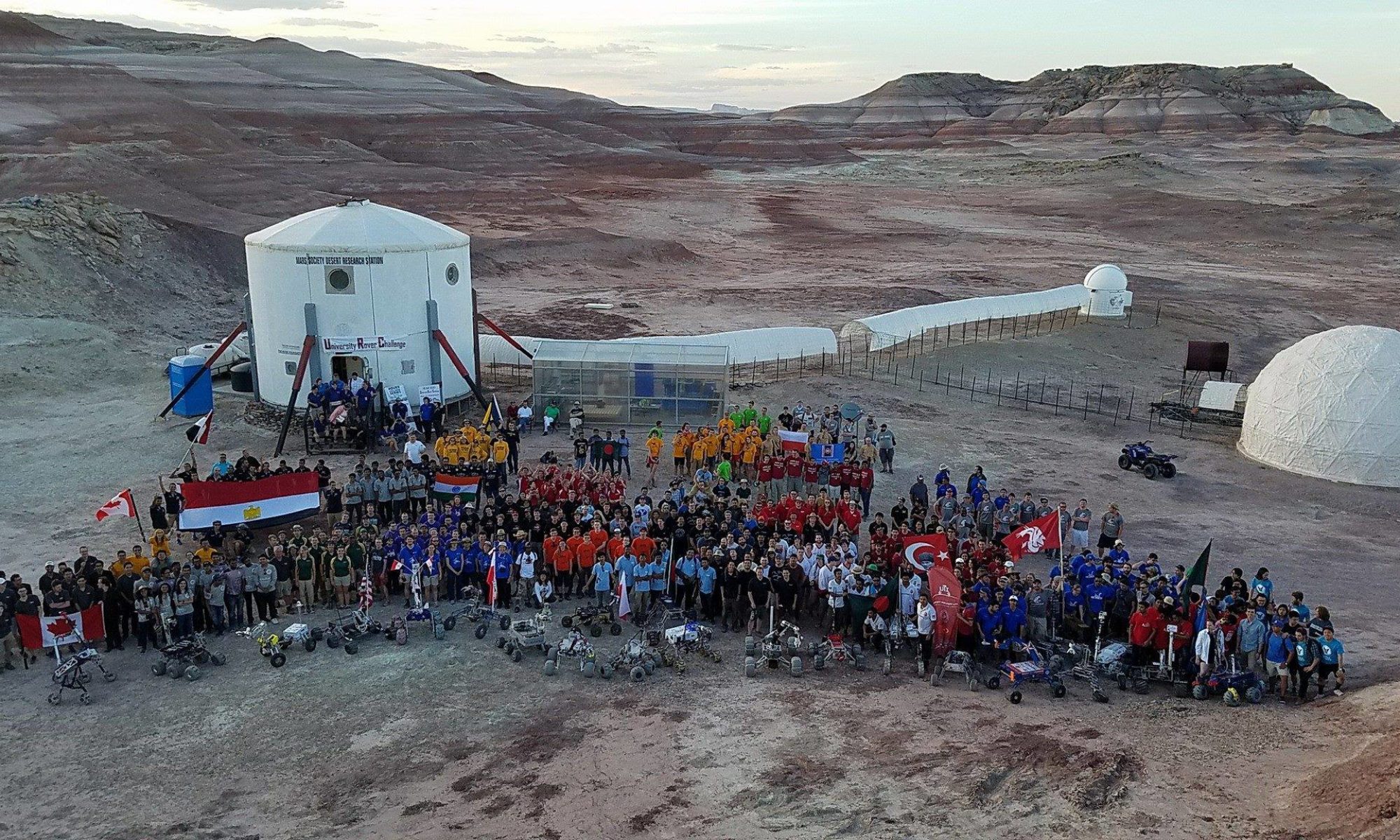
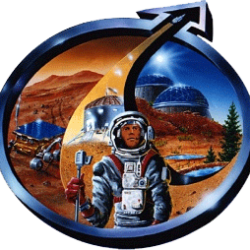
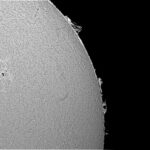
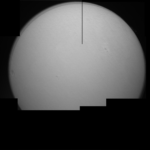
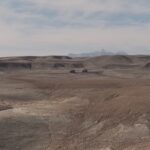
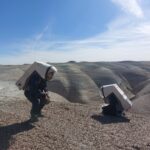
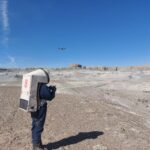
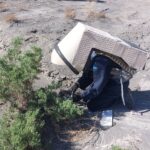
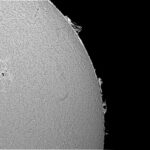

You must be logged in to post a comment.